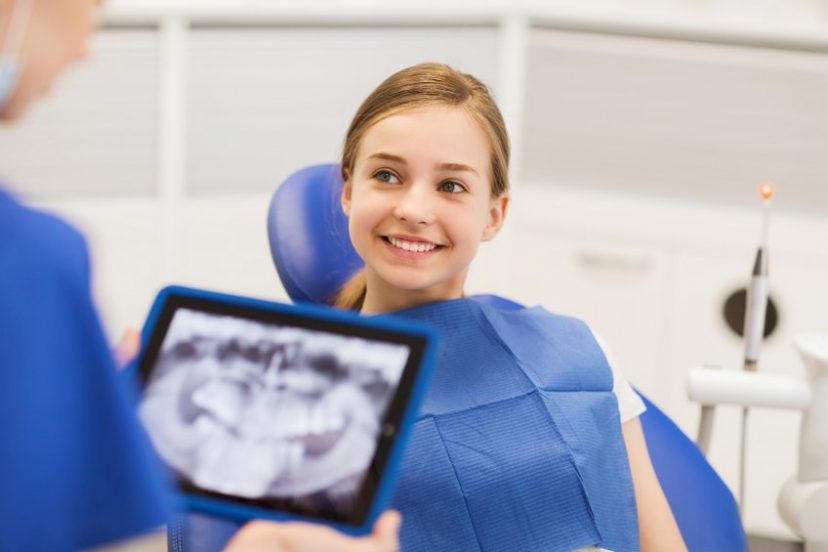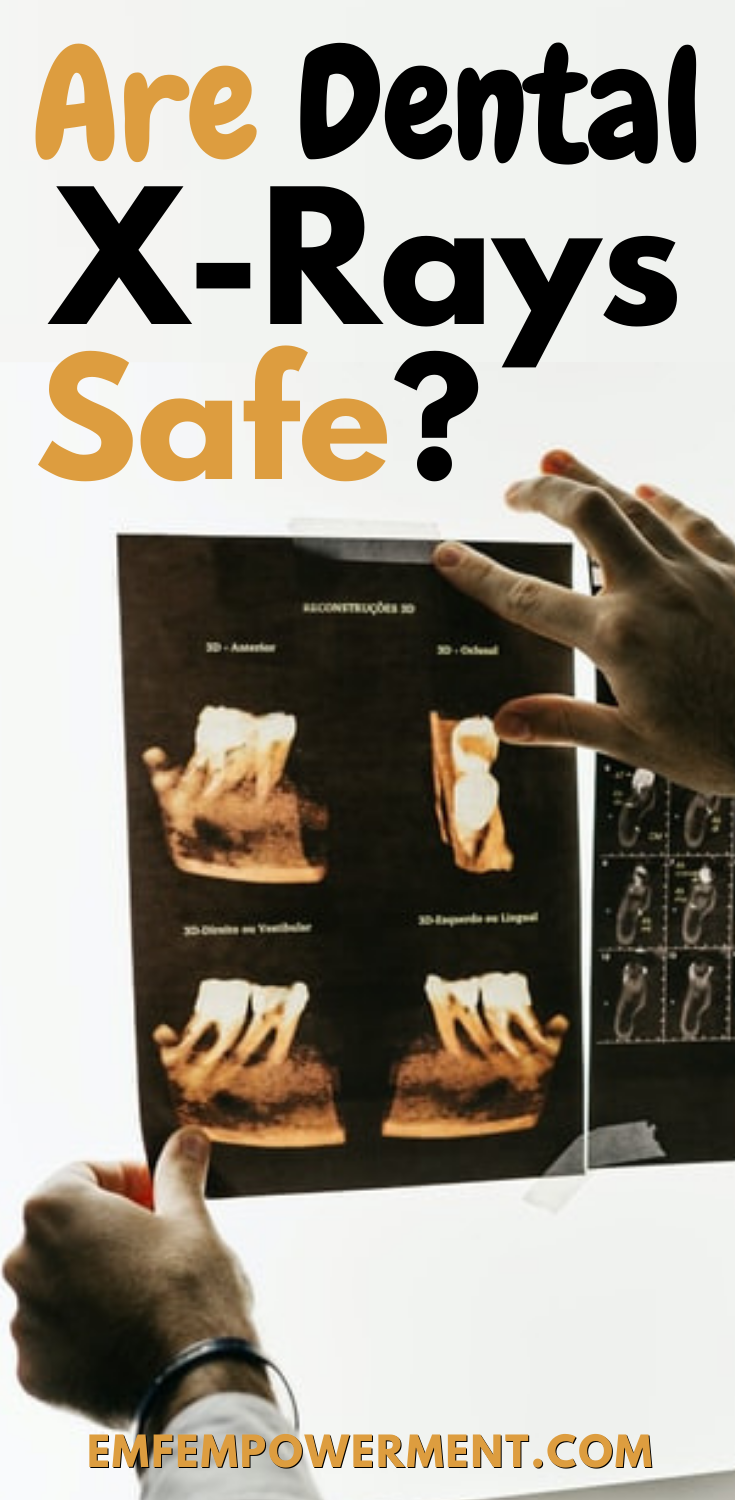On April 3, 1973, the first mobile phone was created. Since then, cell phone technology has…
Are Dental X-Rays Safe? All About X-Ray Radiation

*We may earn a commission for purchases made using our links. Please see our disclosure to learn more.
For many of us, dental X-rays are an accepted part of life. Still, it can be a little alarming when you’re asked to put on a lead vest and thyroid collar. These precautions may be important, but they can also leave patients wondering: are dental X-rays safe? How much radiation are we actually exposed to during an X-ray procedure?
In this guide, we will take a look at how dental X-rays work, and the type of radiation they produce. We will also dig into the possible health effects and special concerns for pregnant women.
How dental X-rays work
X-rays, in general, are a form of ionizing radiation. They have a short wavelength that is easily able to pass through most soft tissues, making them ideal for taking snapshots of bones and other structures inside of the body.
During a dental X-ray, a film is placed inside of the patient’s mouth. The patient is instructed to bite down on the film while a machine on the outside of the patient’s face is positioned to the desired angle. The machine sends a blast of X-rays out, which then passes through the patient’s skin and to their teeth. Because teeth are made of bone, and bone is much denser than soft tissue, the teeth absorb the bulk of the X-ray.
After the X-ray blast, an image is left on the film that was in the patient’s mouth. In the image, the teeth appear darker than the surrounding soft tissues, simply because they absorbed more of the X-ray. Likewise, any abnormalities — fillings, cavities, tumors, etc. appear darker than healthy teeth, because these areas absorb even more of the X-ray.
A single X-ray is generally not enough. In order to paint a full picture of the inside of a patient’s mouth, a dental professional will usually take images from a few different angles.
The end result allows dental professionals to tell quite a bit about a patient’s mouth. Old dental work can be examined and evaluated, new cavities and problem areas can be identified, and impacted wisdom teeth can be spotted. According to the American Dental Association’s guidelines, a healthy adult needs X-rays every two to three years. Children and those with pre-existing dental problems such as gingivitis need them more frequently.
How much radiation in a dental X-ray?
Before we can answer the question, “are dental x-rays safe?”, we must first understand the different types of radiation.
On the electromagnetic spectrum, X-rays fall between ultraviolet light and gamma rays. X-rays and other forms of ionizing radiation have enough power to cause atoms to split, potentially leading to some of the health problems that we will discuss below.
Dental X-rays, in particular, require a very low dose of radiation, although the exact dosage depends on the type of X-ray performed. Extraoral X-rays do not require the film to be placed inside the mouth, whereas intraoral X-rays do.
An extraoral X-ray such as an orthopantomogram (OPG), which is a full panoramic view of both the upper and lower jaw, results in levels around .014mSv. An intraoral X-ray, such as a standard bitewing, produces about .008mSv. For comparison’s sake, a full-body CT scan, which also utilizes X-ray radiation, results in 10.6mSv of exposure, while an abdomen X-ray produces around 1mSv.
Realistically, we are exposed to more cosmic background radiation on a daily basis than we are to dental X-ray radiation. Although the number can vary depending on location, most people are exposed to somewhere around 1.5 to 3.5mSv of background radiation each year.
Potential health risks
Ionizing radiation is well-known for its cancer-causing abilities. The exact mechanism through which it does this is not well-understood. What is known, however, is that ionizing radiation causes alterations and damage to a cell’s DNA. It is possible that when this happens, cancerous mutations may occur.
At very high levels, ionizing radiation has also been associated with extreme health issues such as birth defects, radiation poisoning, and death. The amount of radiation required to cause these issues is above and beyond that of most medical procedures, including dental X-rays. These issues are much more common in instances of nuclear powerplant meltdowns and the fallout from atomic bombs.
So if x-rays do not contain large amounts of ionizing radiation, are dental x-rays safe?
Dental X-rays, in particular, do not pose a huge threat to your health. The actual levels of exposure are too minuscule to do significant damage. Now, if you received dental X-rays every day, your cumulative exposure levels could add up to be problematic. That’s why when the X-ray machine is on and active, the technician working the machine leaves the room. But for the average patient, it is unlikely that a dental X-ray would cause a serious DNA mutation. We can’t say it’s impossible — but it’s not likely.
Furthermore, the use of lead vests and thyroid collars reduces the risk of side effects even further. These items help protect your thyroid gland and sensitive reproductive organs, so while they may not be comfortable, they are definitely worth wearing.
Are dental X-rays safe during pregnancy?
Dental x-rays may be safe for the average patient, but what about pregnant women? Can the baby be harmed in utero?
It’s advised that pregnant women avoid unnecessary X-rays of any kind, including dental, until after their baby is born. According to the American Pregnancy Association, however, dental X-rays do not result in significant radiation exposure for an unborn baby. For that reason, dental X-rays are possibly the least risky type of X-ray for a pregnant woman to receive.
Furthermore, the American Dental Association and other respected organizations view dental X-rays as safe for pregnant women. The most well-documented side effect of in utero dental X-ray exposure is low birth weight, and it is thought that the risk of gum disease when pregnant is higher than the potential risk to the baby.
What all of that conflicting information boils down to, is that the decision whether or not to have dental X-rays when pregnant is one that should be made by the mother, in conjunction with medical professionals. Each case is different, and for some, the benefits may outweigh the risks, while for others it may not.
Bottom line
Dental X-rays result in far less radiation exposure than other types of X-rays. They aren’t without their risks, but those risks are quite small. If you are still concerned but are overdue for your dental X-rays, consider asking your dentist about options that will further reduce your exposure, such as taking fewer films. 



